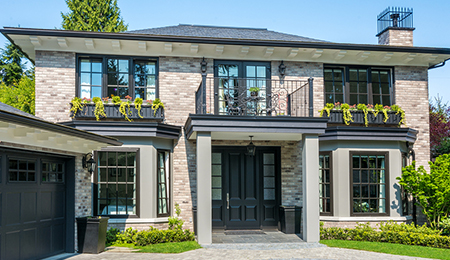Today I have a few tips for buying a home that needs work. There are different types of fixer-uppers out there and some need more work than others. The way you pursue a purchase offer on the home most likely depends on which fixer-upper category it is in.
Most sellers realize that a home needs work when they put it up on the market and have already accounted for that when they priced the home. I have yet to find a seller who is willing to subsidize a buyer’s home improvement dreams, yet that doesn’t stop buyers from trying to get a discount on an already discounted price. It is very important to look at comparable properties in order to determine whether a fixer-upper has been priced correctly.
Now, let’s talk about the different types of fixer-upper homes.
First, you have your basic fixer-upper. Fixer-upper homes are generally priced for sale as-is. These homes often have deferred maintenance items or other minor repairs that the sellers either aren’t willing to fix or cannot afford to fix. When you make an offer on these properties, have your buyer’s agent pull comparables for other fixer-upper properties to see how the price stacks up. That way, you are comparing apples to apples.
On the other hand, you may be interested in a mint condition vintage house. Although these properties are not modernized, they can be very desirable. Mid-century modern houses have made a real comeback recently; other vintage houses include Victorians or Craftsman bungalows. Generally, the seller will add a premium price pad due to the area and architectural uniqueness of the property.
Usually, the interior of a vintage property will be in incredible condition. However, they can look very outdated. When you write an offer on this kind of property, be aware that there may be a premium price to pay for the uniqueness of the property. Make sure that you look at other similar homes and compare the listing price to those that have already sold.
Another kind of fixer-upper is the newer home that may be outdated. Lots of subdivisions have homes that were built in 1995; these sellers know there are newer homes out there, but still price their homes as if they are brand new. That is unfortunate because a lot of the trends from the 90s — like hunter green carpeting — are not popular today. Some of these sellers may be priced above where they should be, so again, make sure to look at comparable properties. When you send your offer in, send along the list of work it would take to modernize the home and include how much it would cost to do all of that work. That way, the seller can see things from your perspective. “Always look at comparable properties to see if the property is fairly priced.” A lot of buyers think they will get a good deal when it comes to buying a foreclosure property, but that’s not always the case. Banks will usually not lower the purchase price on a foreclosure property within the first 30 days. Foreclosures normally come with other rules beyond that. For example, after 30 days, the bank may lower the price by 3%. If 60 days go by without an offer, they may lower the price again by another 3%.
You should also make sure to do a title check on foreclosed properties because the banks have not occupied these properties. The bank should have cleared any hidden liens on the property, but it is still a good idea for you to work with a good title company and pull a complete title report.
If you are interested in a short sale, you need to know that there is nothing short about them. Short sale transactions can take a lot of time to close. Since the seller cannot afford to make the payments on the home, they also cannot afford to do any work on the property, so short sale homes are often sold as-is.
You should also be aware that the price an agent sets for a short sale property is not always accepted by the bank. The bank will do an independent appraisal on a short sale property to ensure that it will be sold at market value. Don’t be lured in by the price on the MLS system unless it says that the price has been previously approved by a third party. More often than not, that’s the price the bank is willing to accept.
Finally, you may want to buy a “packrat” house. If you have ever watched Hoarders, you know that these houses have stuff stacked up to the ceiling and aisles to get from room to room. The challenge with these properties is not that there is a lot of stuff in the house (which makes it hard to visualize what you’re going to do with the property, though), but that there is a monstrous amount of deferred maintenance that needs to be addressed.
Again, it helps to look at other distressed properties to see if the packrat house is priced correctly. It is especially important in this case because you won’t know how much work the property really needs until you get a home inspector in there. Keep in mind that if all of that stuff in the home is still in the way, the home inspector won’t be able to do their job thoroughly. Consider extending your due diligence period and require the seller to allow access to all visible parts of the interior of the property before the home inspection.
The number one thing to keep in mind when purchasing a house that needs some work is to look at comparable sales. You can then deduct the price of the work that’s needed based on estimates from licensed contractors. If that adjusted price lines up with the listing price, you might need to pay the listing price to purchase that fixer-upper.
If you have any questions about fixer-upper properties or need to get in touch with a licensed contractor to fix up your property, just give us a call or send us an email. We would be happy to help you!







